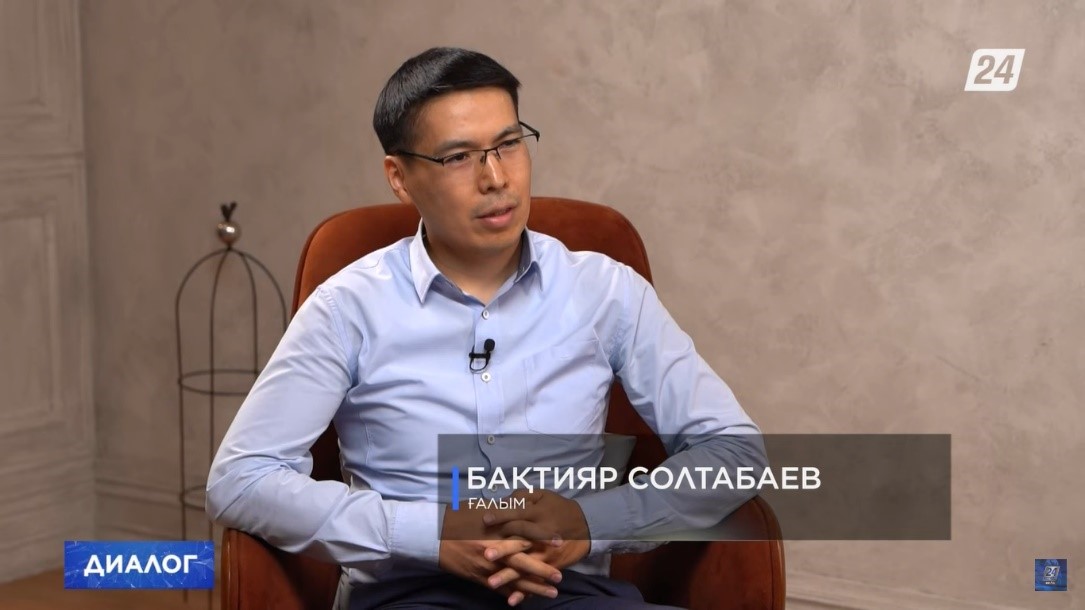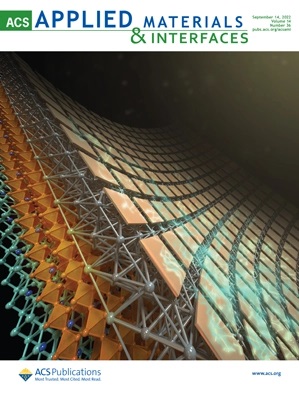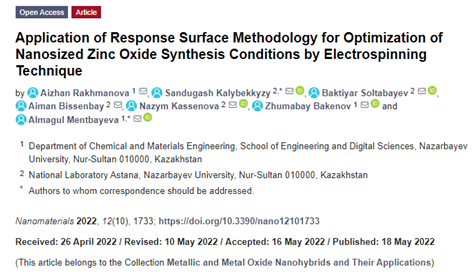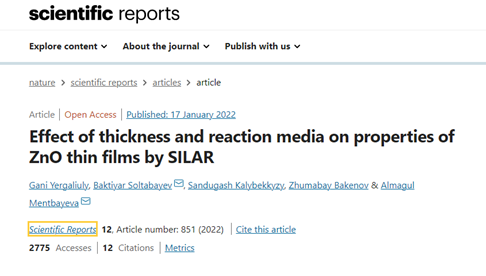Strengthening Sensor Science Collaboration of Advanced Sensors Laboratory, PI 'National Laboratory Astana' and Lodz University of Technology (Poland)
On 10–15 November 2025, Senior researcher of Advanced Laboratory of National Laboratory Astana (NLA), Dr. Gani Yergaliuly undertook a scientific mission to Lodz University of Technology (TUL) in Lodz, Poland within the framework of the research project AP23484950 “Innovative food quality control solution: smart gas sensor technology to detect spoilage of vegetables during post-harvest storage.” During this visit, he delivered a series of seminars to professors, postdoctoral researchers, and students of TUL, focusing on the design, synthesis, and advanced characterization of MOS-based gas sensors for food-quality monitoring and environmental safety. These seminars provided a platform to share advanced knowledge on MOS-based gas sensor technologies with TUL researchers and to present recent results obtained at the Laboratory of Advanced Sensors of NLA, Nazarbayev University.
In addition to his lecturing activities, Dr. Yergaliuly actively participated in laboratory work related to the synthesis and analysis of oxide-based compounds and sensing materials at TUL. This hands-on involvement enabled him to gain new practical experience with complementary equipment, experimental protocols, and characterization techniques used at Lodz University of Technology. The mission also contributed to strengthening academic and research cooperation between NLA (Kazakhstan) and TUL (Poland) in the field of energy-efficient and safety-critical sensor technologies. The parties discussed prospects for joint projects, co-authored publications, and future experimental campaigns, as well as opportunities to develop joint teaching modules, student exchanges, and co-supervised theses. The experience and expertise gained during this visit will significantly support the further development of the Laboratory of Advanced Sensors at NLA, enhancing its scientific capacity, international visibility, and ability to implement innovative gas-sensing solutions for agri-food applications.
November 27, 2025
Chemisorption or Physisorption, that is the question!
Researchers at our lab have advanced the frontiers of gas sensor technology by addressing a fundamental question in surface chemistry: how to distinguish and quantify physisorption and chemisorption during gas–solid interactions. Using Fe-doped SnO₂ thin films prepared via the SILAR method, the team developed a novel experimental approach that separates these two adsorption processes, providing rare insight into electron exchange and surface state dynamics.
November 24, 2025
New Study Demonstrates Graphene-Based Sensors for Hydrogen Purity Monitoring!
A new study shows few-layered graphene powder can monitor hydrogen purity with high sensitivity at just 50 °C. The sensor detects methane, CO₂, O₂, and N₂O at ppm levels, outperforming conventional sensors and meeting ISO standards. This breakthrough offers a compact, low-cost solution for safer, cleaner hydrogen energy.
November 01, 2025
Congratulations to Dr. Aizhan Rakhmanova!
We are proud to announce that Aizhan Rakhmanova has successfully defended her PhD dissertation and earned the degree of Doctor of Philosophy (PhD).
This remarkable achievement is the result of years of dedication, research, and perseverance. Aizhan’s contribution to science and our laboratory is a true inspiration for young researchers and the academic community of Kazakhstan. At GSLab, we celebrate this milestone (the first PhD of gslab.kz) and wish Dr. Rakhmanova continued success, new discoveries, and bold scientific breakthroughs in her career. Her accomplishment not only highlights personal excellence but also strengthens the prestige of Kazakhstani science on the international stage.
August 18, 2025
PhD student Aizhan Rakhmanova receives “Student Research Excellence Award”
Aizhan Rakhmanova, a third-year PhD student at Nazarbayev University, was awarded the Student Research Excellence Award at an international scientific conference. This recognition was granted for her recent publication in a top 10% journal in her research field.
We sincerely congratulate Aizhan and wish her continued success and inspiration in her scientific journey!
May 16, 2025
Congratulations to Our Lab Founders!
We are proud to announce that Dr. Soltabaev, Head of the Lab, and Dr. Turlybekuly, Senior Researcher, have been honored with the prestigious Best Researcher Award! This recognition highlights their outstanding contributions to scientific research and innovation. Congratulations to both for this well-deserved achievement!
February 10, 2025
Fostering International Collaboration: Advancing Gas Sensor Research at Gazi University
In October of this year, Dr. Gani Yergaliuly, a Senior Researcher at the Advanced Sensors Laboratory, undertook a scientific visit to Gazi University (Ankara, Turkey). The trip's primary purpose was to research the gas sensitivity of metal oxide semiconductor (MOS) based nanofilms in the Gas Sensors Laboratory of Professor Selim Acar, a leading expert in the field.
During the visit, Dr. Yergaliuly not only carried out experimental work but also met with the Dean of the Faculty of Natural Sciences at Gazi University, Professor Dr. Reşat Kasap. During their meeting, the participants discussed ongoing research efforts and potential avenues for scientific collaboration. Dr. Yergaliuly and Professor Acar exchanged insights into their current projects and outlined plans for future joint initiatives aimed at advancing gas sensor technologies.
November 19, 2024
Groundbreaking Review on Gas Sensor Selectivity Published in Top-Ranked Journal, ACS Sensors
We are thrilled to announce the publication of the review article titled, “The Cross-Sensitivity of Chemiresistive Gas Sensors: Nature, Methods, and Peculiarities. Systematic Review” by Amanzhol Turlybekuly, Yernar Shynybekov, Gani Yergaliuly, Almagul Mentbayeva, and Baktiyar Soltabayev in the prestigious journal ACS Sensors, the top-ranked journal in the field of sensor research.
This review addresses a fundamental challenge in gas sensor technology—selectivity, particularly for chemiresistive gas sensors, which are widely studied for their solid-state applications. Selectivity, a critical performance parameter, remains difficult to assess consistently, especially in environments containing mixtures of gases that interfere with each other. The authors’ systematic review classifies and describes four primary methods researchers use to evaluate selectivity in chemiresistive gas sensors, emphasizing key aspects of testing performance and assessment methodologies. By providing in-depth insights into gas properties, adsorption and desorption processes, and competitive adsorption of gas molecules, the authors offer a much-needed guide to support researchers and developers in advancing sensor technology.
This comprehensive work, now available in ACS Sensors, serves as an invaluable resource for the scientific community, providing guidance and recommendations that could pave the way for more standardized practices in selectivity evaluation for chemiresistive gas sensors.
November 18, 2024
The PRiME 2024 ECS has awarded Aidarbek!
We are pleased to announce that Aidarbek Nuftolla, a 2nd year Master student in the Department of Chemical and Materials Engineering at Nazarbayev University and a junior researcher in Advanced Sensors Laboratory at National Laboratory Astana (NLA), Astana, Kazakhstan, was awarded a travel grant from the Electrochemical Society (ECS) USA to participate in the prestigious PRiME 2024 ECS conference in Honolulu, Hawaii, held from October 6th to October 11th. This grant facilitated Aidarbek Nuftolla's presentation on “Improving the Gas Detection Abilities of ZIF-8 Coated ZnO through Titanium Metal Doping” that was funded by AP23484950 < October 5, 2024
1st Anniversary: achievements of the Advanced Sensors Lab
In the heart of NU, a pioneering force emerged on 14th March 2023—the Advanced Sensors Laboratory (ASL) at NLA, a beacon of excellence in gas sensor research and development.
Established under the leadership of Assistant Professor Dr. Almagul Mentbayeva, the lab swiftly rose to prominence. A testament to their impact is evident in the SciVal statistics from Scopus, showcasing their dominance—accounting for nearly 50% of the nation's scholarly output in gas sensors.
Their impact resonates strongly in the premier scientific journals worldwide, firmly establishing their presence in the Top 10%. The rapid ascent of the scientific endeavors has been catalyzed by the Collaborative Research Project (021220CRP0122), a pivotal initiative championed by NU and guided by the expertise of Prof. Almagul Mentbayeva and Dr. Baktiyar Soltabayev. Their exceptional achievements have garnered significant acclaim, exemplified by the prestigious nomination by Nature for inclusion in the esteemed 'Top 100 in Materials Science - 2022' collection.
To read the full article, please press the news photo...
March 20, 2024
Exciting Announcement!!! We have conquered the ACS Sensors
We are thrilled to share that our esteemed research group has successfully published an article in the renowned ACS Sensors Journal!
Our team hard work and commitment to advancing knowledge in CO2 gas sensors have culminated in this significant achievement. This publication marks a milestone in our pursuit of excellence and reinforces our position at the forefront of cutting-edge research.
We extend our heartfelt gratitude to all contributors, collaborators, and supporters whose invaluable contributions have made this accomplishment possible. Together, we continue to push boundaries and make impactful strides in our field.
The ACS Sensor is the Top-level journal in the gas sensors development and has the highest percentile in the scope.
March 18, 2024
Congratulations to the founders of the lab The Head of the Lab Dr. Soltabaev, and Senior researcher Dr. Turlybekuly won a prestigious Government Scholarship for talented young researchers.
The Ministry of Science and Higher Education of the Republic of Kazakhstan announces the results of the 2023 competition for annual state scientific scholarships. Let me express my most sincere congratulations to them on winning the annual scholarship! This is a great achievement that confirms your desire for knowledge, diligence and talent. Your work and dedication have not only elevated you to new heights, but also inspired others. The extent of your dedicated engagement and your success is admirable. May this scholarship become not only a well-deserved prize, but also an additional source of motivation for you to continue striving for your highest goals and dreams. You are an example for all of us, and your success inspires us to work harder and believe in ourselves. We wish to the B.Soltabayev and A. Turlybekuly continued success and fulfillment in your scientific pursuits.
January 29, 2024
One of the founders of Advanced Sensor Lab won the 'Best Scientific Worker of Kazakhstan' Award 2023
The Ministry of Science and Higher Education of the Republic of Kazakhstan announced the outcomes of the 2023 'Best Scientific Worker' award, an annual recognition that honors 50 exceptional scientists across the country by year-end. This prestigious award aims to support and encourage scientists and researchers who have significantly contributed to the development of science and technology. Professor of the Department of Chemical and Materials Engineering and one of the founders of Advanced Sensor Lab, Almagul Mentbayeva, was unveiled as the winner in the category of Natural Sciences.
December 26, 2023
We congratulate our colleagues with the publication of groundbreaking article
titled ''CuO/TiO2 Heterostructure-Based Sensors for Conductometric NO2 and N2O Gas Detection at Room Temperature'' in the journal of Sensors and actuators B: Chemical (IF=8.6)
This study represents a significant milestone as it is the first to employ a room-temperature N2O gas sensor capable of detecting ultra-low concentrations. The resulting gas sensors have outstanding sensitivity characteristics and can be used to develop commercial gas-sensing devices.
We wish to the authors team A. Turlybekuly, M.Sarsembina, A. Mentbayeva, Zh.Bakenov and B.Soltabayev continued success and fulfillment in your scientific pursuits.
The complete article is accessible through the link provided; simply click 'photo'.
September 20, 2023
We are pleased to announce that B.Soltabayev, A. Ajjaq, G. Yergaliuly, Y. Kadyrov, A. Turlybekuly, S. Acar and A. Mentbayeva published an article in The Journal of Alloys and Compounds (IF=6.2) entitled ''Ultrasensitive nitric oxide gas sensors based on Ti-doped ZnO nanofilms prepared by RF magnetron sputtering system''.
It is aimed to explore the advantages of titanium doping and magnetron sputtering as opposed to chemical-based methods on the surficial and electrical characteristics of ZnO films and their gas sensing performance in particular. RF magnetron sputtering was employed to synthesize a pure ZnO nanofilm as a reference and Ti-doped ZnO nanofilms with various Ti contents. The doping process was done by sputtering Ti-doped ZnO targets developed through solid-state reaction, and doping content was determined by EDS analysis. All nanofilms exhibited pure hexagonal wurtzite structure and relatively flat and homogenous surfaces with a clear distribution of nanoparticles in the Ti-doped samples. The observed enhancement in the properties of the nanofilms was reflected in the ultimate performance of the gas sensor. In this regard, the sensor with 1 wt% Ti content showed the best gas sensing performance with an ultra-sensitivity of 1.72 for 1 ppm and 0.9 for 1 ppb NO gas at a relatively low working temperature of 167 °C. The sensor also acquired outstanding stability, quick responsivity, reproducibility and superior selectivity required for NO monitoring.
The complete article is accessible through the link provided; simply type 'photo'.
August 25, 2023
Arcelor Mittal Temirtau visited our Laboratory
The main purpose of the research is to predict and simulate methane outbursts in coal mines, fostering safety and innovation in Kazakhstan's mining industry. Advanced Sensors Lab and ArcelorMittal Temirtau have commenced joint research, aiming to address significant challenges in the prediction and simulation of methane outbursts in coal mines.
The complete article is accessible through the link provided; simply click 'photo'.
August 2, 2023
Scientist, PhD doctor Amanzhol Turlybekuly: 'It is very important to popularize science'
Doctor of PhD, researcher at National Laboratory Astana, NU Amanzhol Turlybekuly gave an interview in the program 'Dialogue' 24.kz . Dr. Turlybekuly's research interests are chemical engineering, composite materials for biomedicine, reverse engineering, 3D printing. During the interview, the topic of diabetes mellitus, the causes of the growth of diabetic patients, as well as his project to develop gas sensors that will determine the amount of acetone released by breathing was touched upon. Moreover, along with the presenter, the topics of Kazakhstan's science in the future, the importance of the development of the humanities in the country, and the 'New Kazakhstan' were discussed.
November 30, 2022
Senior researcher at the PI 'National Laboratory Astana' Baktiyar Soltabayev: The principle of honesty in the field of education should come first
Baktiyar Soltabayev, Senior Researcher at the National Laboratory Astana of Nazarbayev University as a guest on the TV program 'Dialogue'24.kz, answered questions about gas sensors. He has over seven years of experience in the field of gas sensors and nanofilms, as well as experience in nuclear physics, new materials, and technologies. During the interview, topics were raised about the causes of environmental pollution with toxic gases, how these causes can be eliminated with the help of gas sensors based on metal oxides, their applications, the gas sensor project, and that foreign colleagues were interested in this project.
November 11, 2022
Congratulations to our colleagues B. Soltabaev, G.Yergaliuly, Ahmad Ajjaq, A. Beldeubaev, S. Acar, Zh. Bakenov and A. Mentbayeva published an article in ACS Applied Materials & Interfaces (IF=10.383) entitled 'Quick NO Gas Sensing by Ti-Doped Flower–Rod-like ZnO Structures Synthesized by the SILAR Method'.
Ti-doped ZnO films with flower–rod-like nanostructures were synthesized by the successive ionic layer adsorption and reaction (SILAR) method for enhanced NO gas-sensing applications. The stoichiometric ratio of Ti in the host ZnO lattice was confirmed by atomic absorption and energy-dispersive X-ray spectroscopies. All of the synthesized films exhibited a pure wurtzite hexagonal structure that seemed to deteriorate at high Ti doping contents as was manifested by the measured X-ray diffraction patterns. Scanning electron microscopy images of ZnO revealed the coexistence of porous flower- and rod-like structures, which became finer, denser, and more compact with Ti doping. By UV–vis measurements, the transmittance of the synthesized pure ZnO thin film in the visible region (∼75%) increased by about 10% with Ti doping, and the energy band gap seemed to decrease up to some limit of Ti content. Among the fabricated sensors (based on pure ZnO, 1% Ti-doped, 3% Ti-doped, and 5% Ti-doped ZnO films), the best sensing performance was observed for the 1% Ti-doped ZnO film. At first, this was associated with its high density of oxygen vacancies present on the surface of the film and ionized oxygen vacancies present in the ZnO lattice (confirmed, respectively, by X-ray photoelectron and photoluminescence spectroscopies). Nonetheless, this may also be due to its increased crystallinity (confirmed by X-ray diffraction and photoluminescence spectroscopy), high area-to-volume ratio (confirmed by scanning electron microscopy images), high specific surface area (confirmed by Brunauer–Emmett–Teller measurements) as well as high mobility and carrier concentration (confirmed by Hall measurements). The sensor was highly selective to NO gas and showed notable stability as well as very short response and recovery times, which makes it eligible for the early detection of any indoor or outdoor NO gas leakages.
August 30, 2022
Congratulations on publishing A. Rakhmanova, S. Kalybekkyzy, B. Soltabayev, A. Bissenbay, N. Kassenova, Zh. Bakenov and A. Mentbayeva with a new article 'Application of Response Surface Methodology for Optimization of Nanosized Zinc Oxide Synthesis Conditions by Electrospinning Technique' in Nanomaterials!
Zinc oxide (ZnO) is a well-known semiconductor material due to its excellent electrical, mechanical, and unique optical properties. ZnO nanoparticles are widely used for the industrial-scale manufacture of microelectronic and optoelectronic devices, including metal oxide semiconductor (MOS) gas sensors, light-emitting diodes, transistors, capacitors, and solar cells. This study proposes optimization of synthesis parameters of nanosized ZnO by the electrospinning technique. A Box–Behnken design (BB) has been applied using response surface methodology (RSM) to optimize the selected electrospinning and sintering conditions. The effects of the applied voltage, tip-to-collector distance, and annealing temperature on the size of ZnO particles were successfully investigated. Scanning electron microscopy (SEM) and transmission electron microscopy (TEM) images confirm the formation of polyvinylpyrrolidone-zinc acetate (PVP-ZnAc) fibers and nanostructured ZnO after annealing. X-ray diffraction (XRD) patterns indicate a pure phase of the hexagonal structure of ZnO with high crystallinity. Minimal-sized ZnO nanoparticles were synthesized at a constant applied potential of 16 kV, with a distance between collector and nozzle of 12 cm, flow rate of 1 mL/h, and calcination temperature of 600 °C. The results suggest that nanosized ZnO with precise control of size and morphology can be fabricated by varying electrospinning conditions, precursor solution concentration, and sintering temperature.
May 22, 2022
We are pleased to announce that G.Yergaliuly, B.Soltabayev, S. Kalybekkyzy, Zh. Bakenov and A. Mentbayeva published an article in Scientific Reports (IF=4.379) entitled 'Effect of thickness and reaction media on properties of ZnO thin films by SILAR'.
Zinc oxide (ZnO) is one of the most promising metal oxide semiconductor materials, particularly for optical and gas sensing applications. The influence of thickness and solvent on various features of ZnO thin films deposited at ambient temperature and barometric pressure by the sequential ionic layer adsorption and reaction method (SILAR) was carefully studied in this work. Ethanol and distilled water (DW) were alternatively used as a solvent for preparation of ZnO precursor solution. Superficial morphology, crystallite structure, optical and electrical characteristics of the thin films of various thickness are examined applying X-ray diffraction (XRD) system, scanning electron microscopy, the atomic force microscopy, X-ray photoelectron spectroscopy, ultraviolet–visible spectroscopy, photoluminescence spectroscopy, Hall effect measurement analysis and UV response study. XRD analysis confirmed that thin films fabricated using ethanol or DW precursor solvents are hexagonal wurtzite ZnO with a preferred growth orientation (002). Furthermore, it was found that thin films made using ethanol are as highly crystalline as thin films made using DW. ZnO thin films prepared using aqueous solutions possess high optical band gaps. However, films prepared with ethanol solvent have low resistivity (10–2 Ω cm) and high electron mobility (750 cm2/Vs). The ethanol solvent-based SILAR method opens opportunities to synthase high quality ZnO thin films for various potential applications.
January 17, 2022




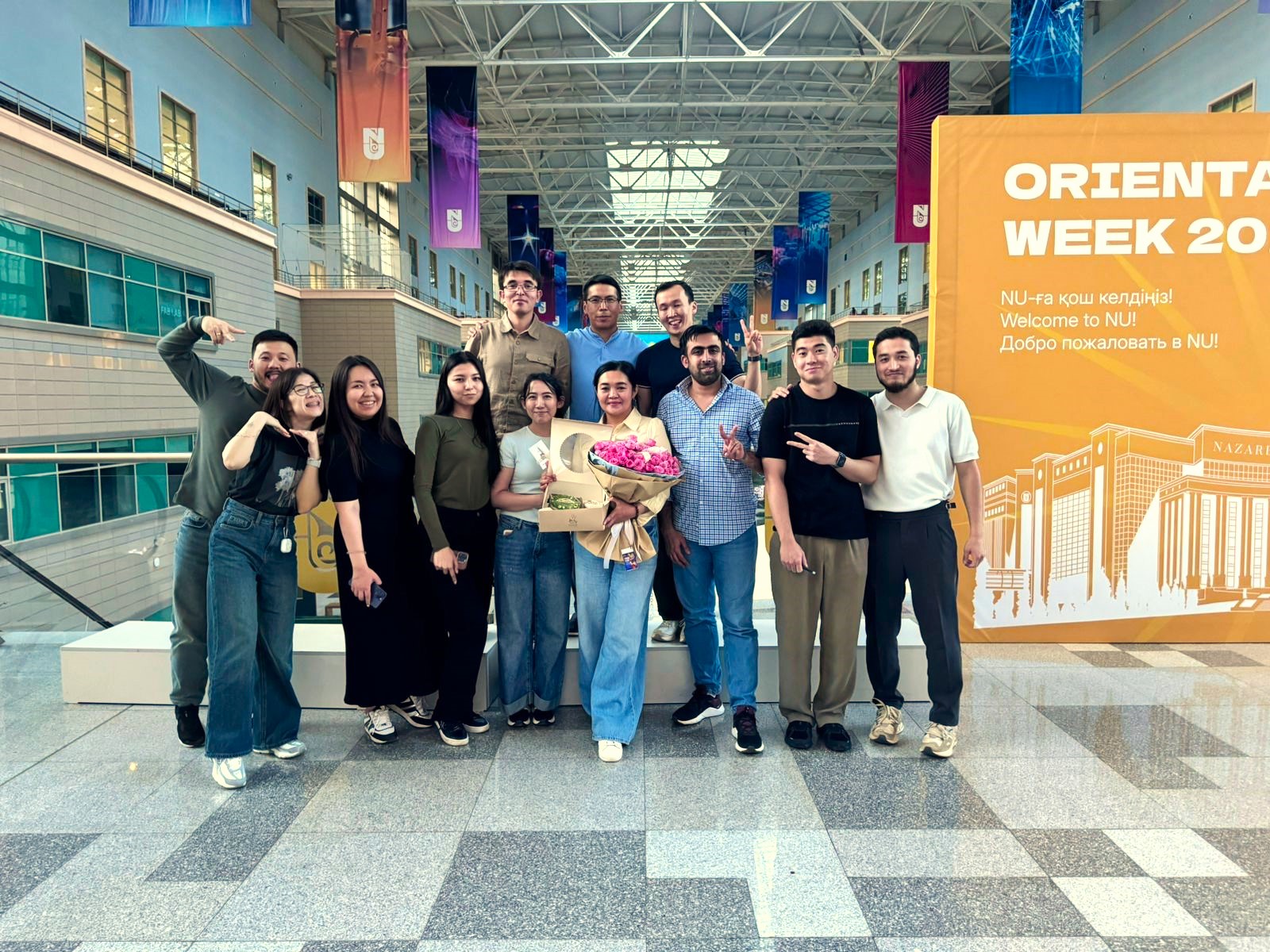
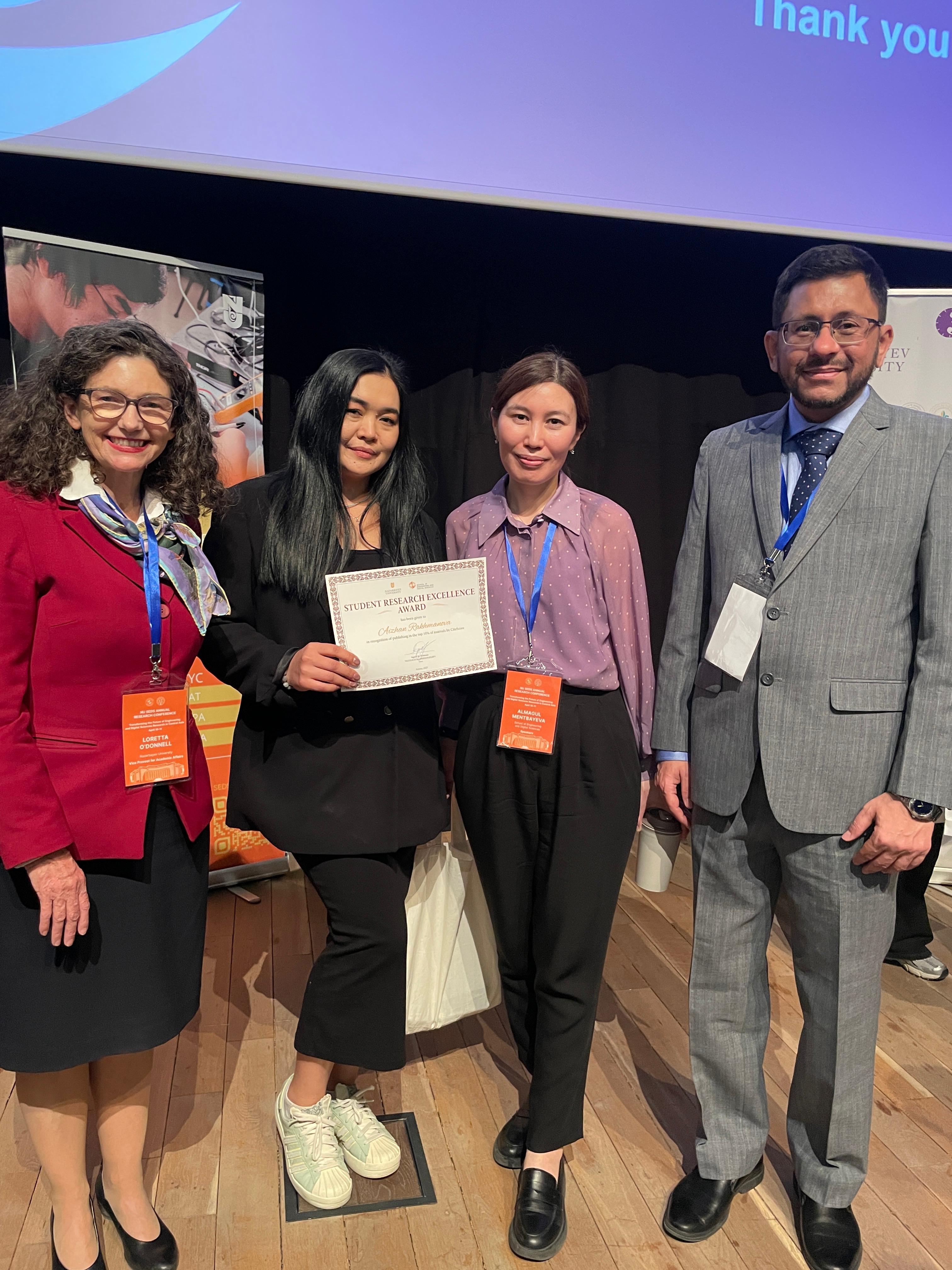
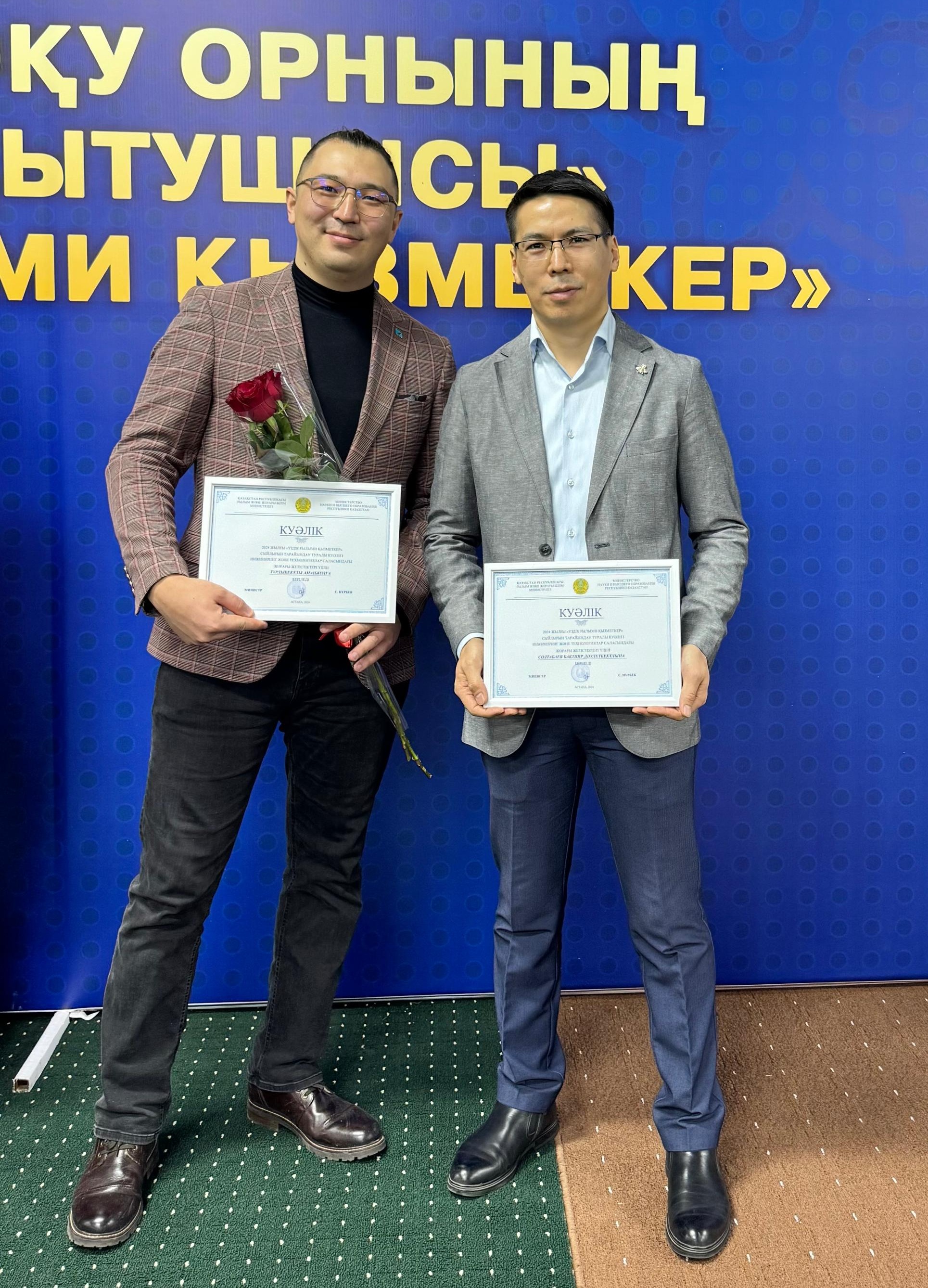
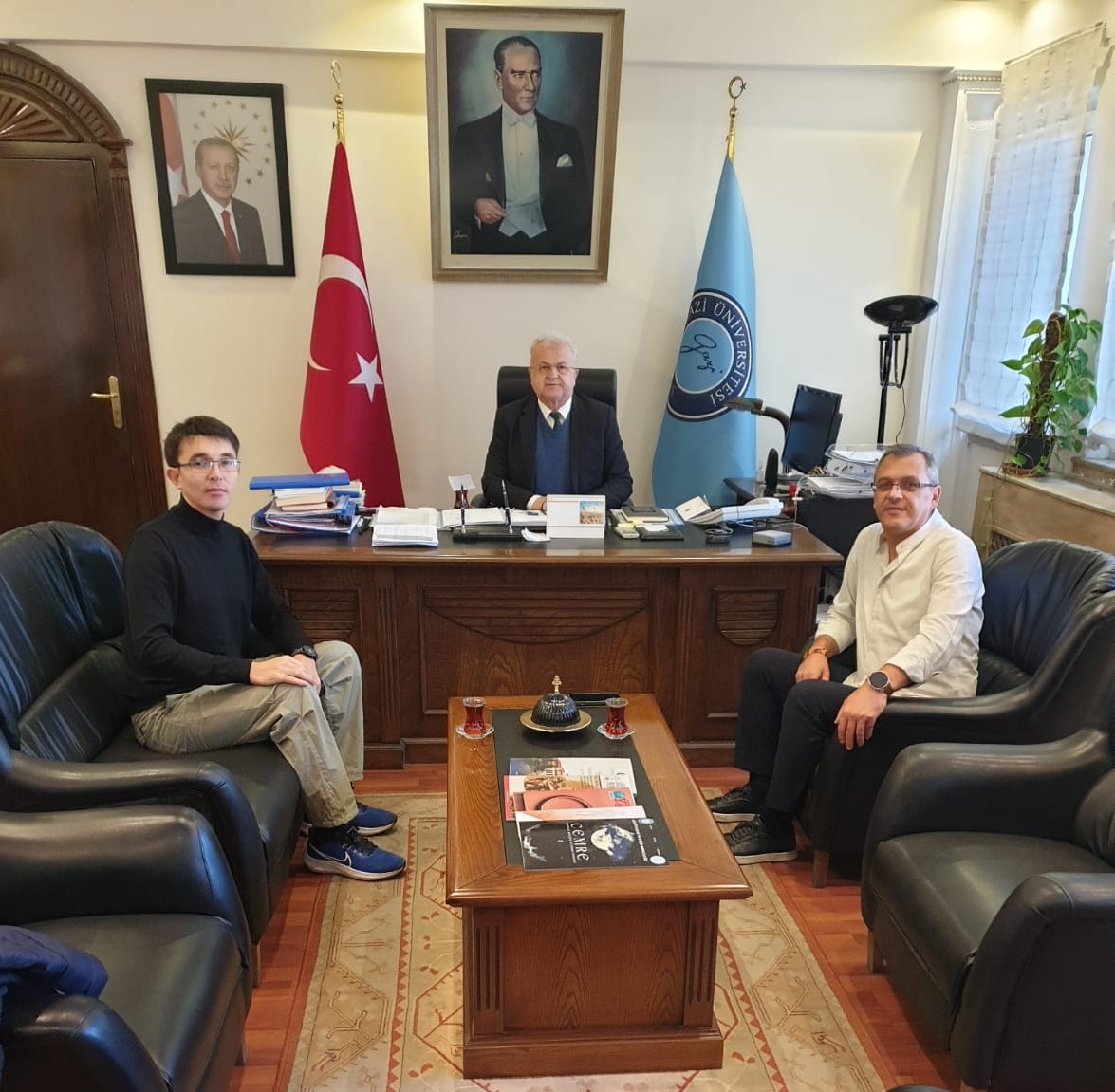

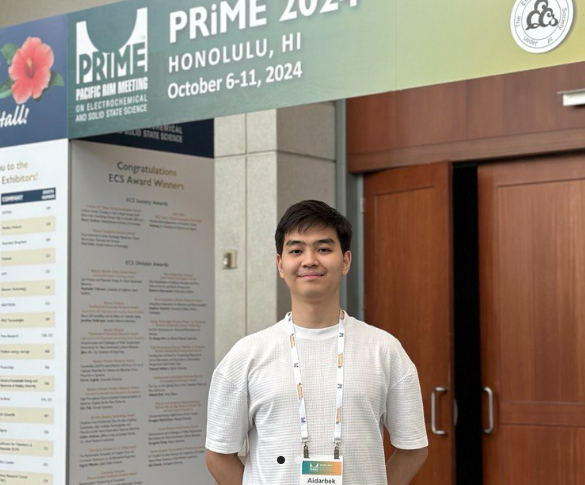




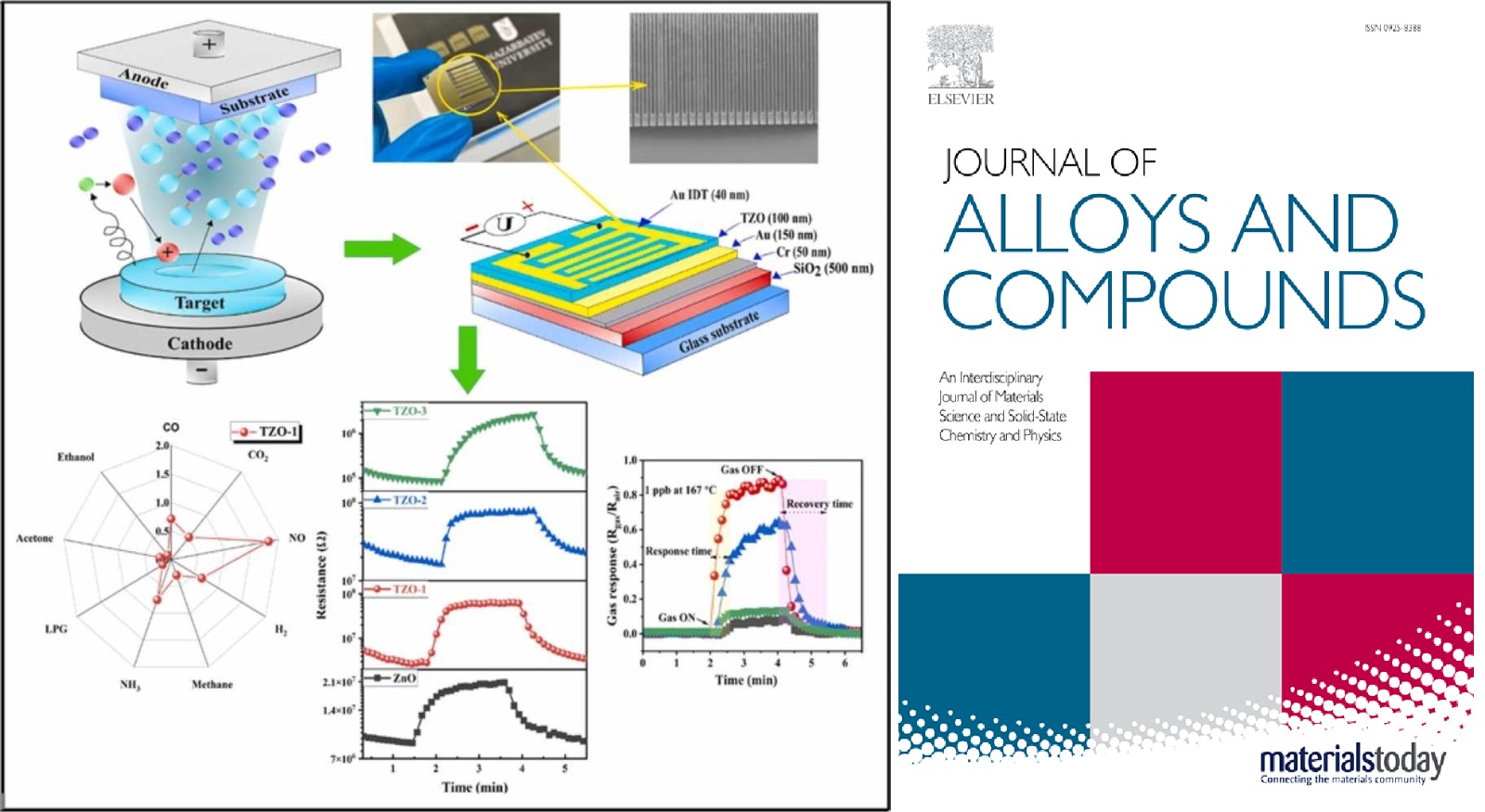
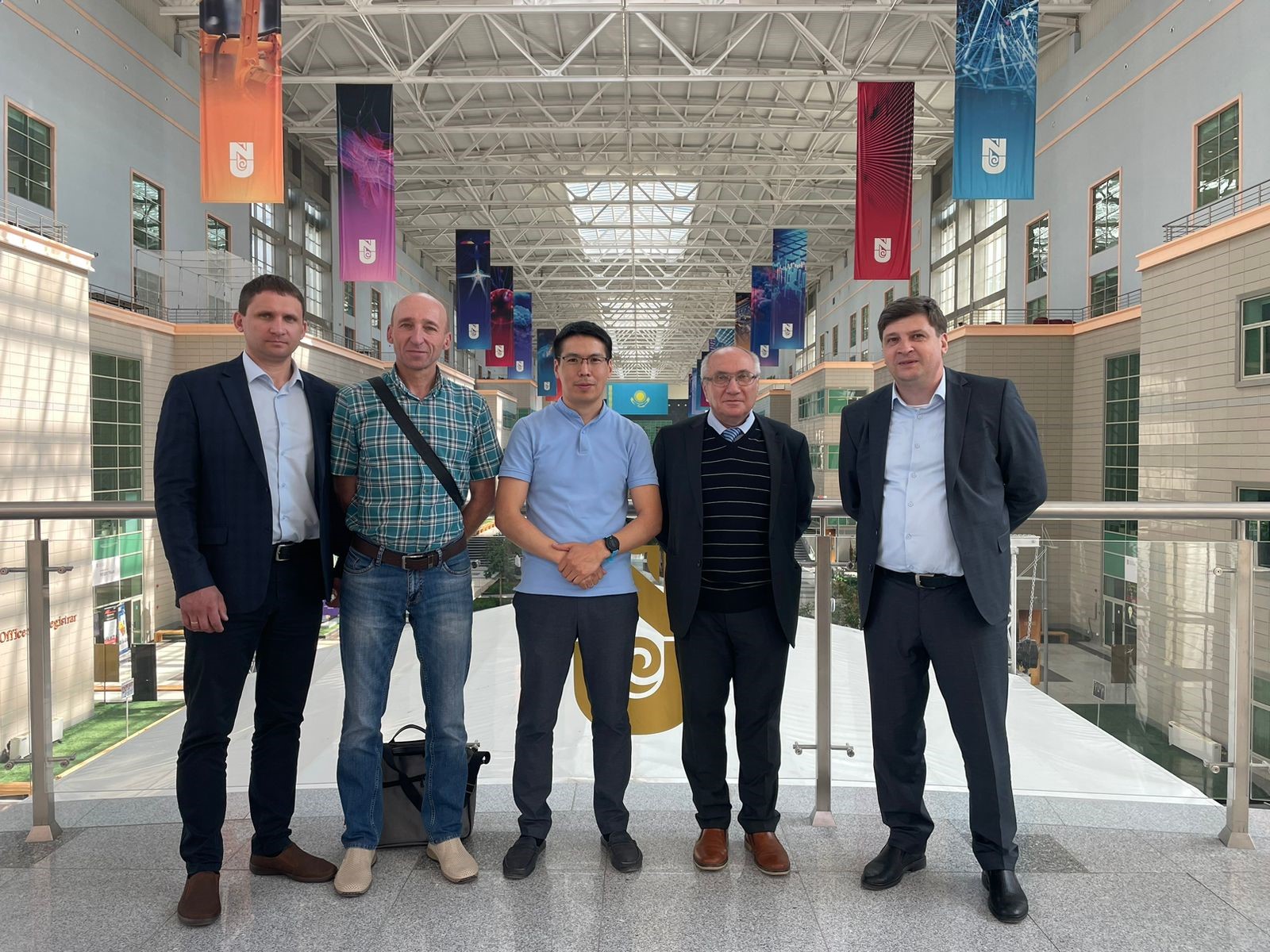

 Interview
Interview